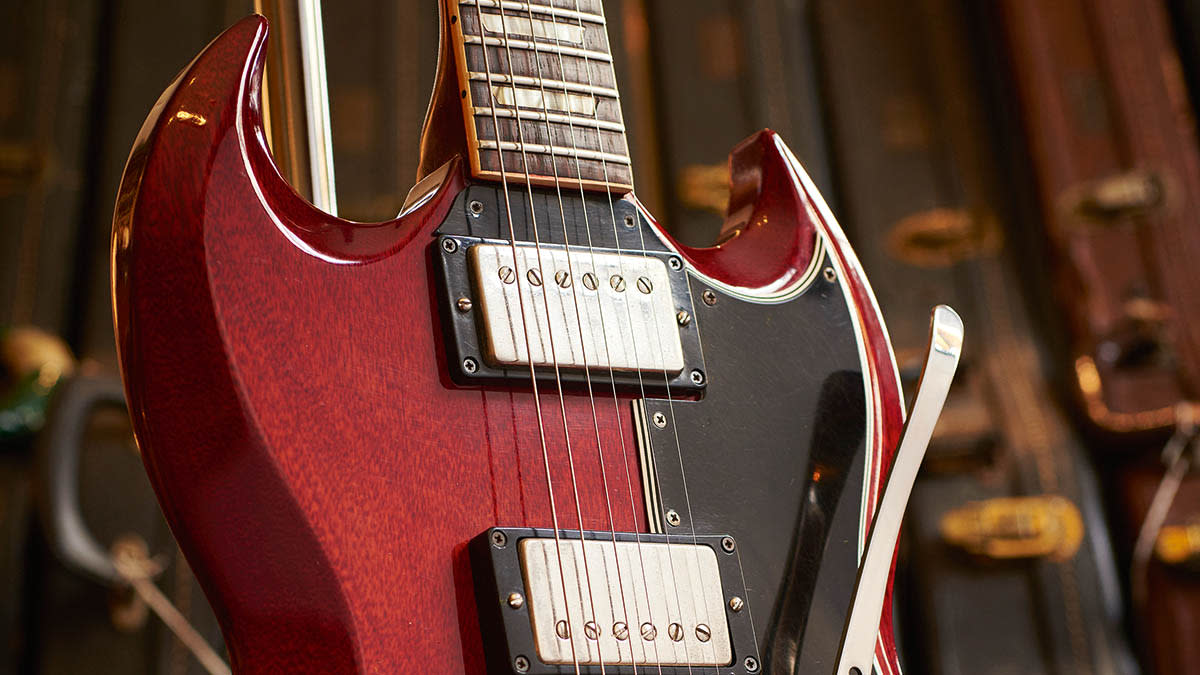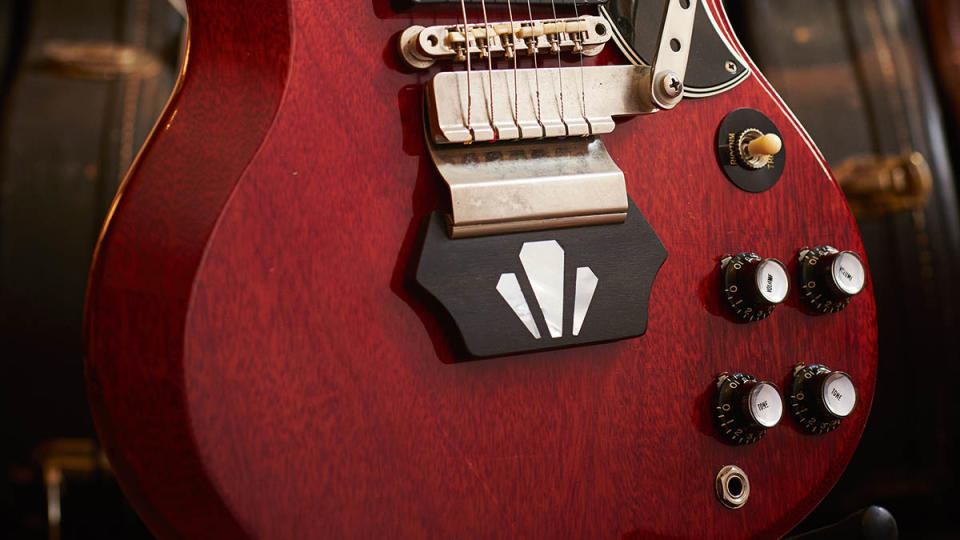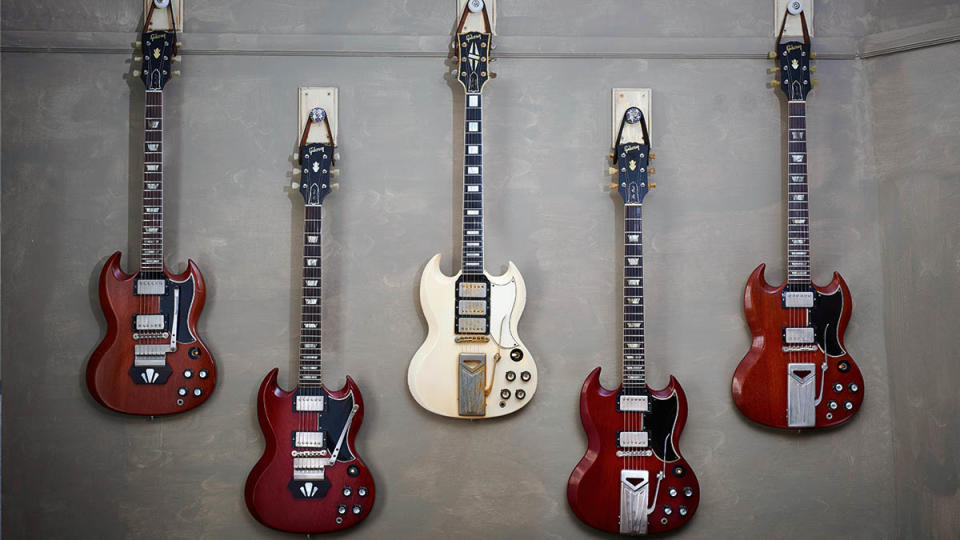The rise of the Gibson Les Paul/SG Standard

Gibson’s debut solidbody electric guitar line got off to a great start following the release of the Les Paul Model/Goldtop in 1952. By 1957, however, Les Paul sales had tailed off significantly.
Facing stiff competition from Fender, company president Ted McCarty and his design team doubled down on their efforts to come up with exciting, innovative products. Diving deep for new ideas, Gibson surfaced with a plethora of now iconic designs in 1958.
Among them were the Explorer, Flying V, ES-335 and electric double-neck guitars (the Double 12 and Double Mandolin). Also that year, the Goldtop was revamped with a sunburst finish and renamed the Les Paul Standard. Meanwhile, the single-P-90 Les Paul Junior and TV guitars changed from single- to double-cutaway bodies.

Easy access to the upper frets was a major selling point, as evidenced on all of Gibson’s new designs. The company deemed its double-cutaway Les Pauls to be “ultra-modernistic in appearance and practical in performance”, and the dual P-90 Les Paul Special followed suit in 1959.
That year, it was renamed the SG Special (SG stands for Solid Guitar) and appeared alongside the similarly rebranded SG TV. These solidbodies were the first to receive the ‘SG’ designation, but with their rounded double-cutaways and slab bodies they appear markedly different to the archetypal Gibson SG profile that came shortly afterwards.
Consistently poor sales of the flagship Les Paul Standard and Custom models throughout the late ’50s and into 1960 prompted Gibson to cease production of the debut single-cutaway style and return to the drawing board.
Although the original Les Paul blueprint would make a return in 1968 due to demand following endorsement by the likes of Keith Richards, Eric Clapton and Jeff Beck, what Gibson wanted back in 1960 was a brand-new design – something that would make an impact and claw back the company’s success within a rapidly expanding solidbody market.
The first of Gibson’s “new” Les Paul Standards were shipped towards the end of 1960 and were followed by the “completely redesigned” Les Paul Customs in early 1961. They appeared alongside each other in promotional literature that read, “thinner, lighter in weight and custom contoured… Combination bridge and tailpiece is a Gibson first – can be moved up or down to adjust tension.”
This Gibson ‘sideways’ Vibrola divides opinion, and many players prefer an SG sans vibrato system. Nevertheless, the firm persisted with the idea, later fitting several types including the ‘leaf & lyre’ Maestro Vibrola, the ‘short’ Vibrola (with or without a pearl-inlaid ebony block) and the Bigsby B-5 model.

In 1961, the remaining solidbody models adopted the new thin, contoured, pointed double-cutaway solid mahogany body styling. Thus, before the year was out, the full-size line-up comprised the Cherry Les Paul Standard and Les Paul Junior, and White Les Paul Custom, SG Special and SG TV (the Special was also available in Cherry). In 1963, Les Paul’s name was dropped from the Custom, Standard and Junior guitars as the entire solidbody range was designated SG.
Officially known as the SG Standard from ’63, this classic guitar has been famously played by some of the biggest names in rock including Eric Clapton, George Harrison and Angus Young.
The evolution of the Gibson Les Paul/ SG Standard
1958 Rounded double-cutaway Les Paul Junior & TV; Les Paul Model renamed Standard
1959 Rounded double-cutaway Les Paul Special; Les Paul TV & Special renamed SG
1960 Pointed double-cutaway Les Paul Standard supersedes single‑cutaway design
1961 Pointed double-cutaway Les Paul Junior & Custom and SG TV & Special
1963 Les Paul Standard, Junior and Custom renamed SG
1965 Nickel-plated hardware switches to chrome; nut narrows from 1 11/16” to 1 9/16” or 1 5/8 ”
1966 Large ‘bat-wing’ pickguard (no pickup surrounds)
1971 Superseded by SG Deluxe; semi-circular control plate; small block markers
1972 SG Standard reintroduced; ‘harmonica’ bridge; small block markers
Mid-1980s SG-62 (first Les Paul/SG Standard reissue)

